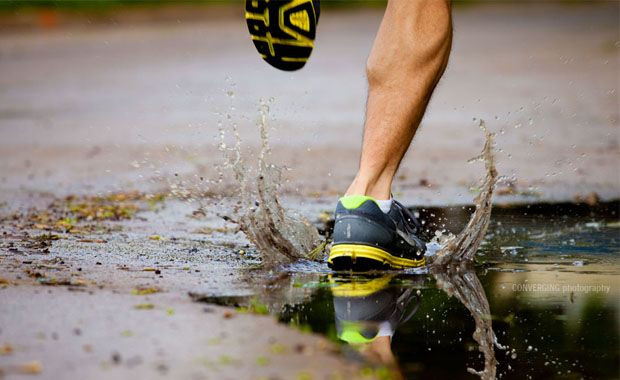Does Cushioning In Running Shoes Prevent Injuries? Study Says Extra-Padded Sneakers Make No Difference

For many runners out there, it’s easier on your joints when your running shoes are padded and spongy. Or at least that’s what we all thought.
A study recently published in the British Journal of Sports Medicine, however, claims that the pads in your running shoes really don’t make much of a difference at all.
“The results do not support the common argument from the running shoe industry that runners with higher body mass should be recommended shoes with greater shock-absorption characteristics,” Daniel Thiesen, lead author and member of the Sports Medicine Research Laboratory of the Department of Public Health in Luxembourg.
Theisen, who is a physical therapist and a runner himself, wanted to test the efficacy of running shoe cushions in a “real life” situation, since past studies on this topic didn’t show any clear-cut benefits for people in non-laboratory conditions.
He gathered 247 participants — people between the ages of 30 and 50 — and divided them into two groups. The researchers provided shoes to their participant runners. All of the sneakers were identical, except half had a soft midsole while the other half did not.
The runners were required to wear the shoes only for running, and to run 10 miles per week for 5 months. Out of the 69 runners who reported injuries, 32 had hard-soled sneakers and 27 had the softer-soled ones.
While the shoe cushion did not do much to affect injuries, other risk factors were measured to have more of an effect. For example, people who were slightly overweight, as well as runners who have had a past injury, were more likely to develop running injuries than others.
The biomechanics of running — the way you run and how your feet hits the ground — will affect injuries more so than the type of shoe or padding, Dr. Mark P. Kelly, an exercise physiologist with the American Council on Exercise, told Reuters.
Interestingly enough, the study may point to the fact that padded shoes may actually hurt runners more than help them: cushioning "takes away from the tactile sensation that tends to protect a runner," Kelly told Reuters. "In other words, if something hurts our feet when we are jogging, we will naturally change things up so it doesn't hurt. If anything, a harder midsole offers more protection, because it may induce more stability on the plantar surface of the foot and thus spread the impact out more evenly."
The results, Thiesen concludes, “make good sense because our ancestors were great runners but they never wore running shoes.”



























